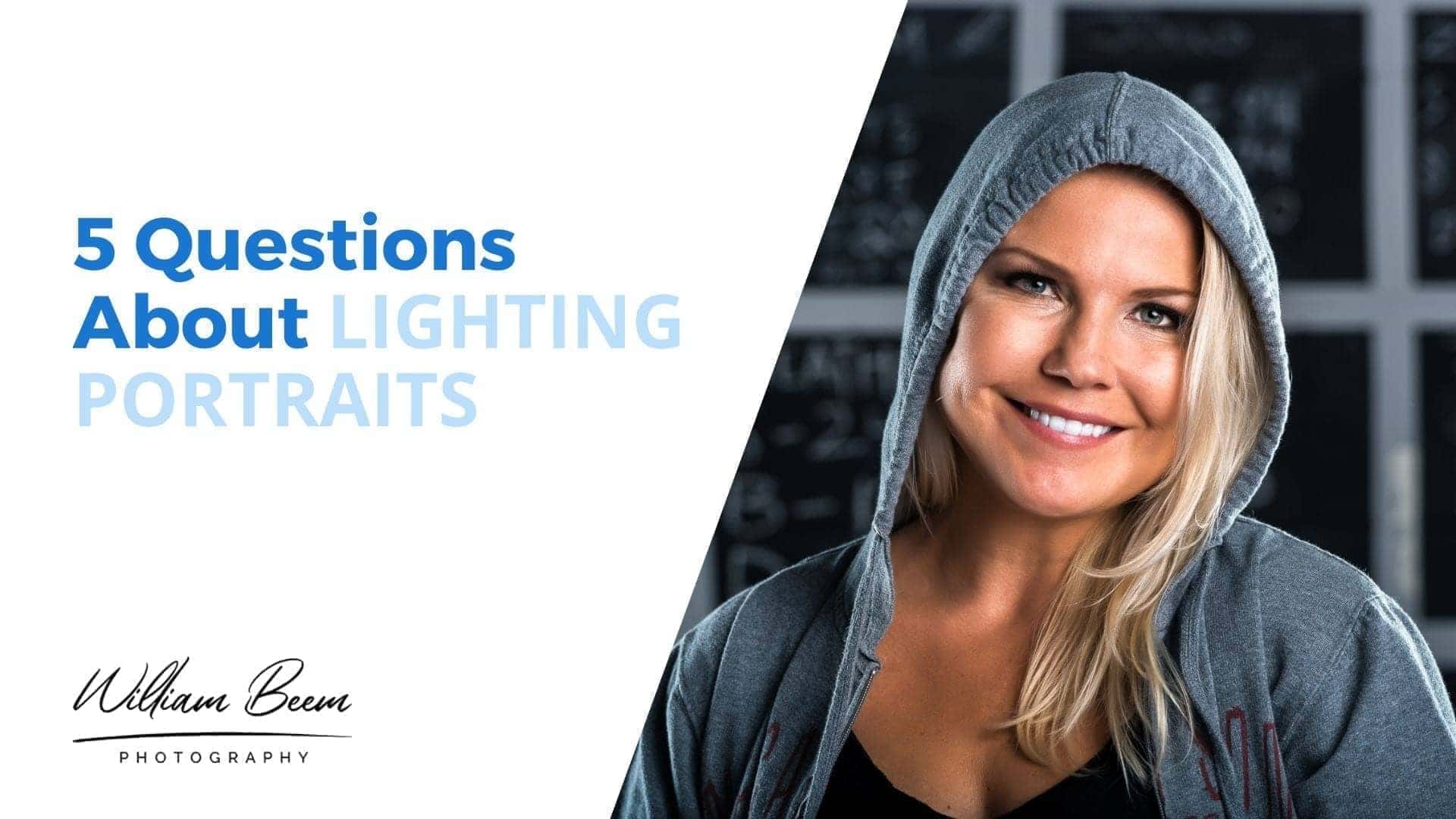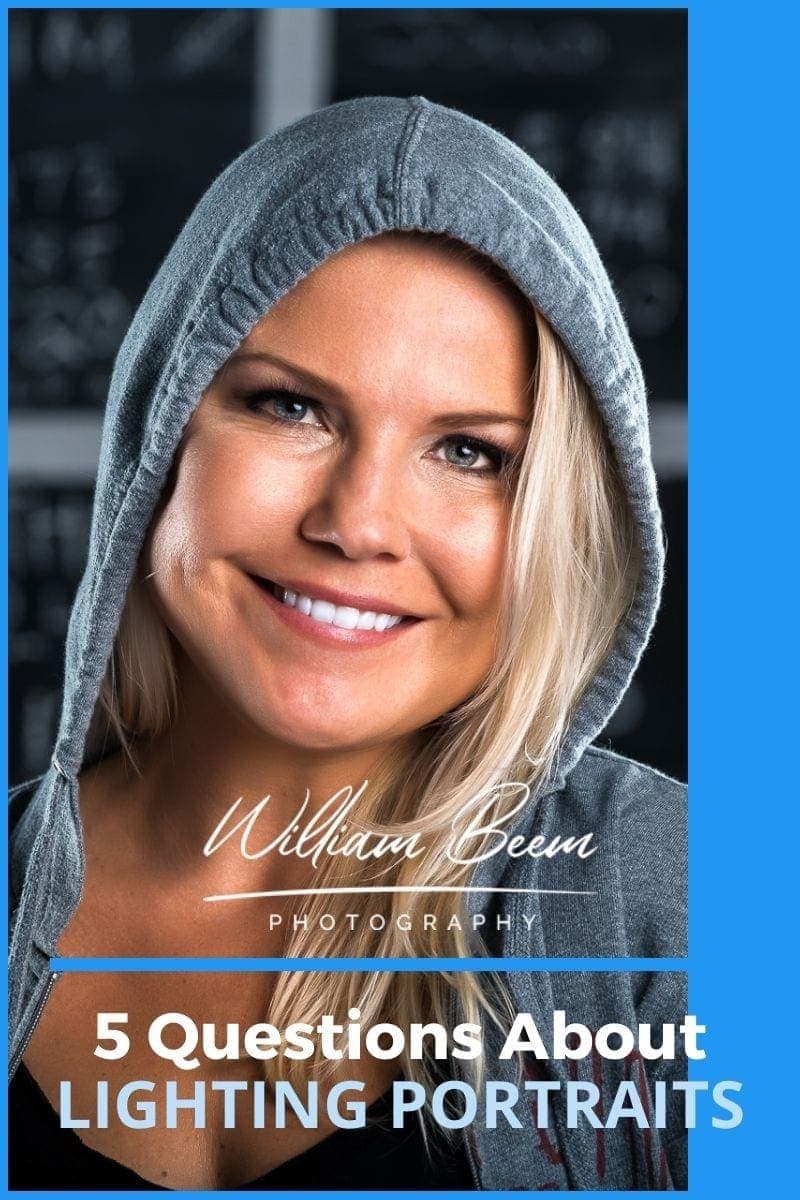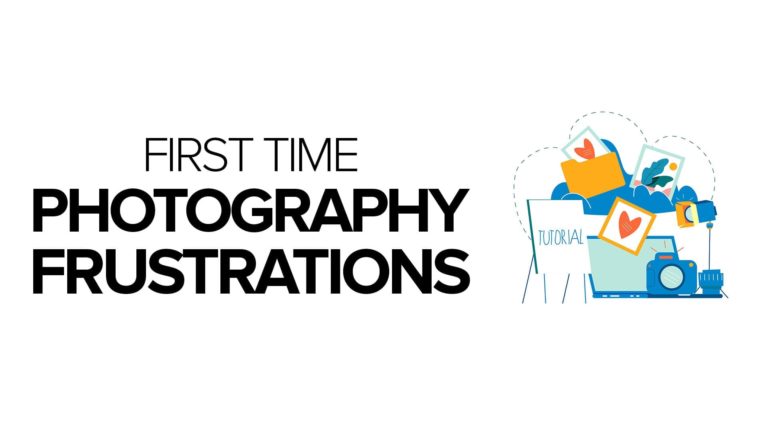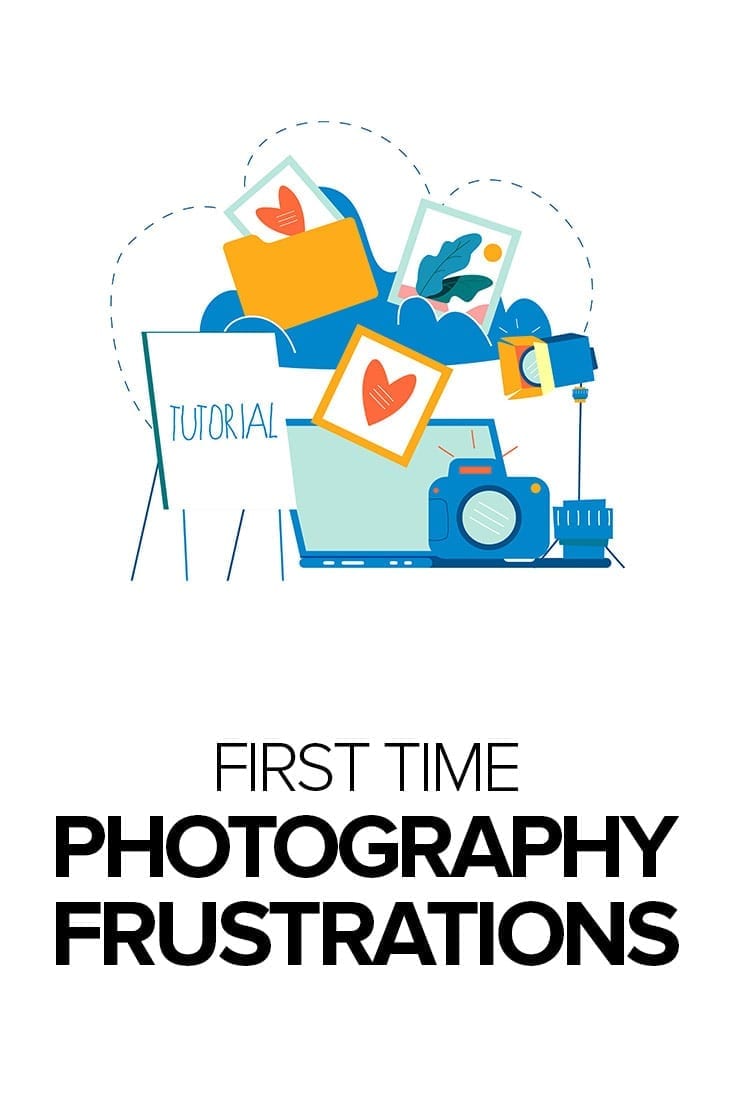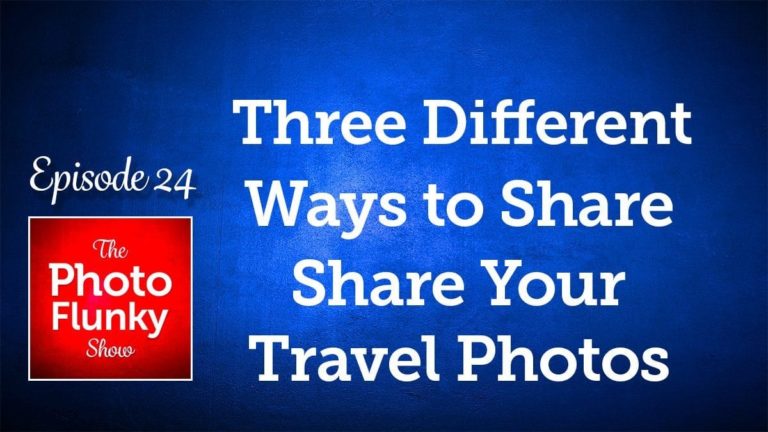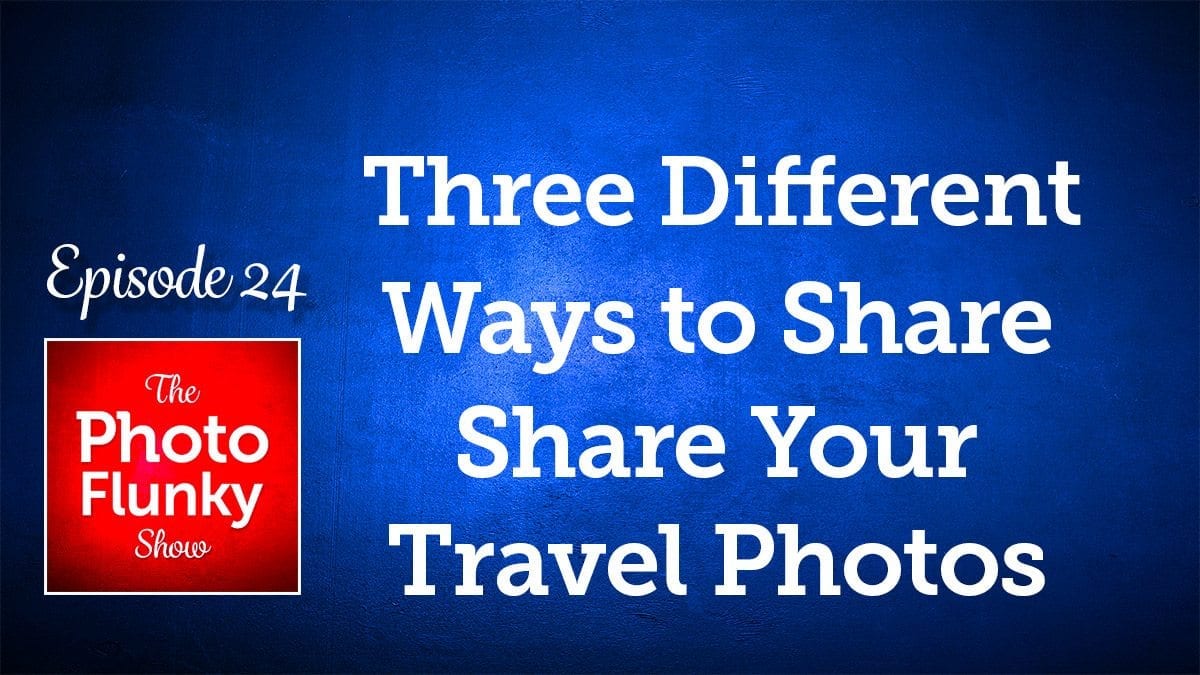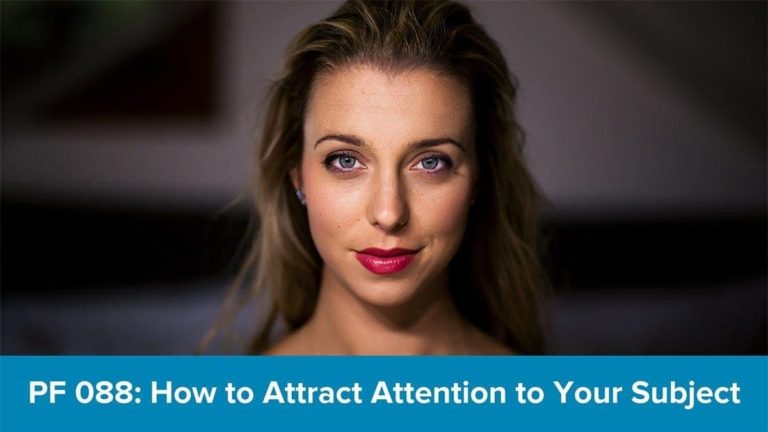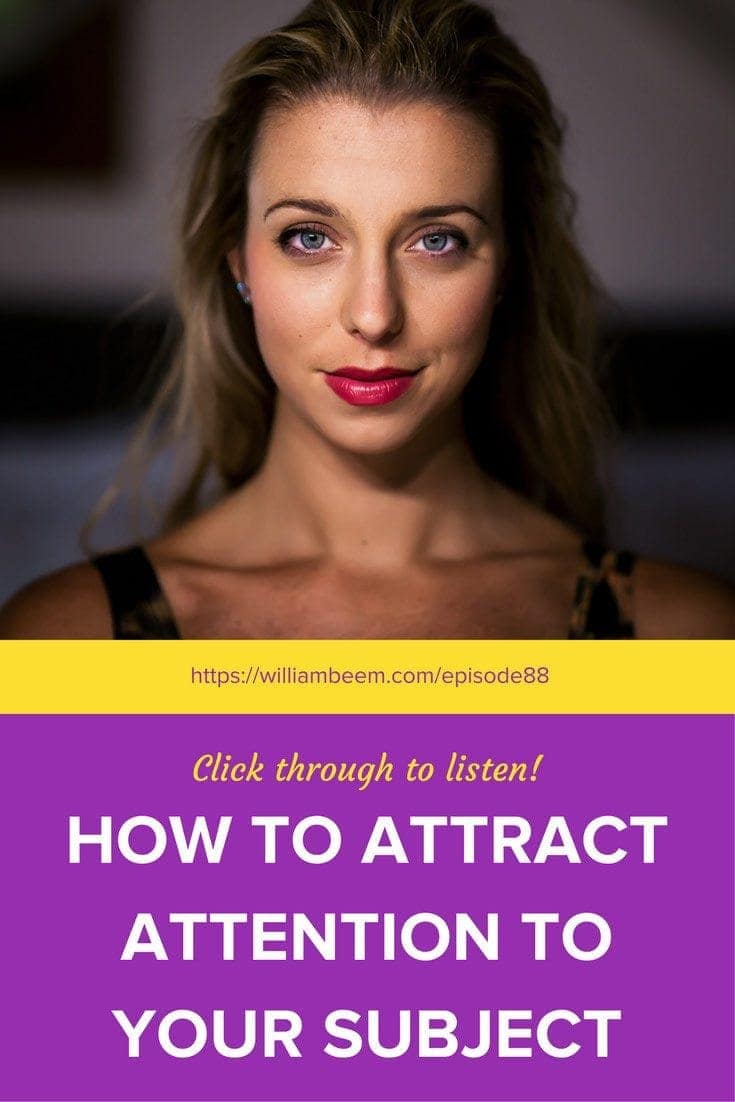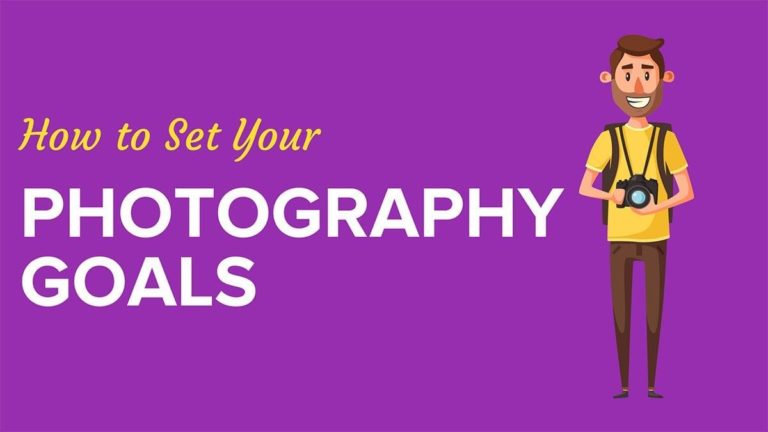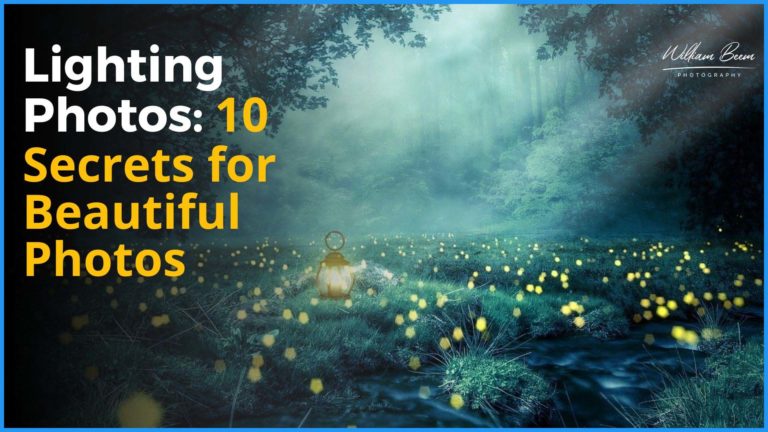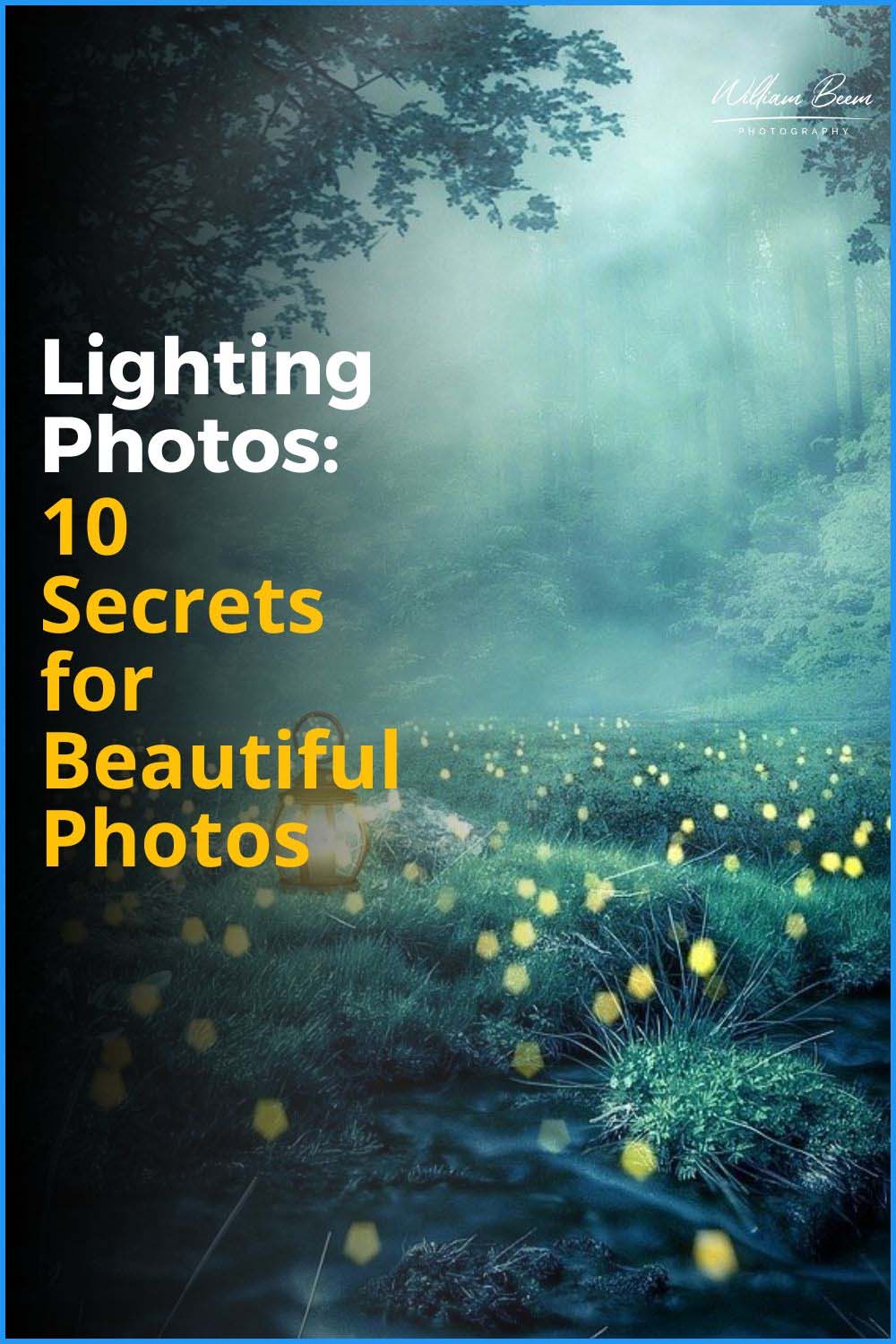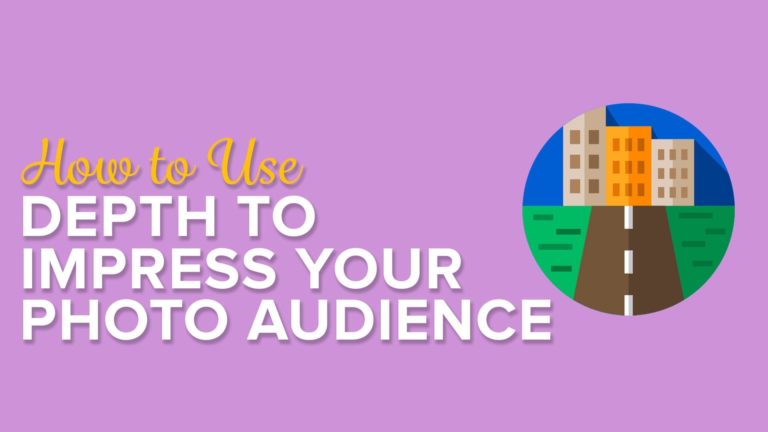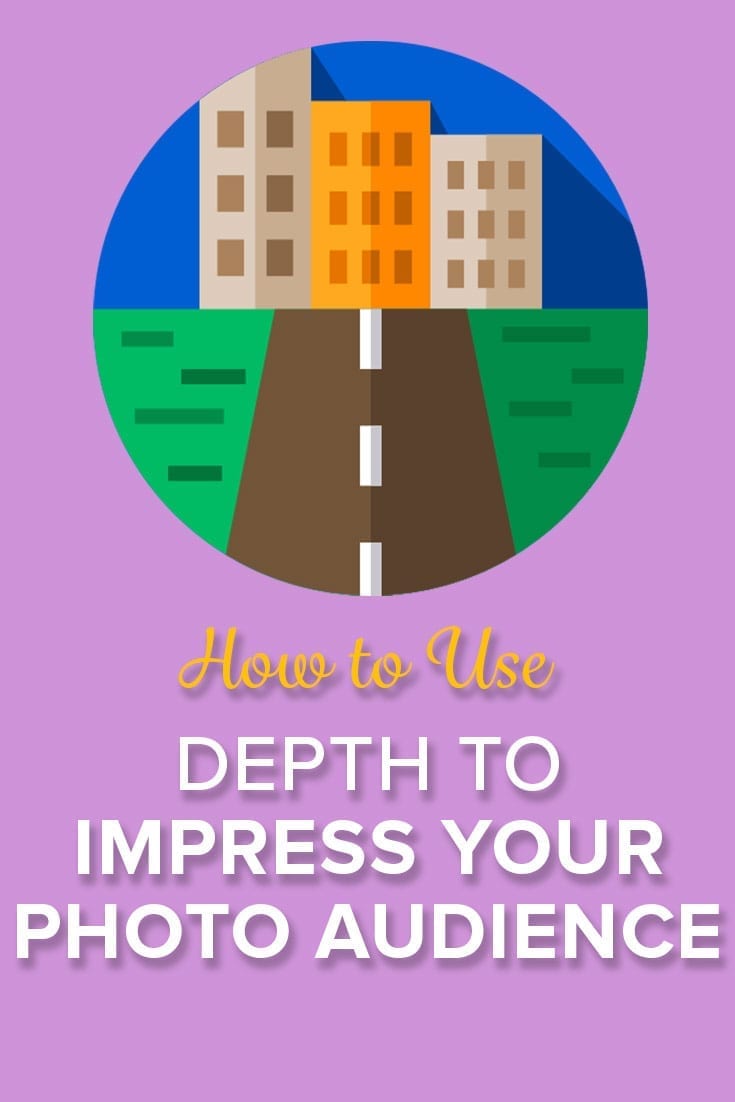Affiliate Disclosure: We earn a commission if you purchase through one of our links at no additional cost to you.
Lee has 5 questions about lighting portraits for me to answer on this week’s podcast episode. To be fair, I asked her to come up with some questions to ask for a few reasons.
She’s a great photographer who doesn’t really have experience with flash photography and I know we have folks like that in our audience. The idea was to get some insight to the kind of issues photographers face when getting started with off-camera flash.
Finally, we have some more resources to come for portrait photographers and I’m looking forward to sharing them with you. I’ve spent the past couple of months working on a new resource that’s going to grow, and getting your input will help me keep it on the right track. So please ask your questions about lighting, portrait photography, visual storytelling or anything else related and I’ll provide my answers.
Lee’s Questions About Lighting
The first thing I want you to know is this. Lee cheated. She put more than five questions into this episode, claiming that some of them were sub-questions. So count that as a bonus, if you like.
Here are Lee’s questions about lighting in this episode.
- Is it possible to get quality photos without a lot of gear?
- Can you take nice portraits indoors without off-camera flash?
- If you could only choose one light, what would you choose?
- Can you figure lighting ratios without a lot of math?
- How do you handle photos in harsh sunlight?
Some of the questions refer to gear that I mention in the episode. Please check out my Resources page if you’d like to see what gear I’m using and recommending.
Time Stamps
Today on I Like Your Picture, It's going to be a question and answer time about lighting. I asked Lee to come up with five questions, that things that she'd like to know about lighting, and that's what we're going to talk about. I'm William Beem welcome to, I like your picture. The show that helps you improve your photography with visual storytelling.
What is visual storytelling? It's a method of approaching your photography with a knowledge of who you're trying to serve with your photos and what emotion you want to make them feel. We encourage you to concentrate on your subject, light and background to create a photo your audience loves. I'm glad you found us. Hi, I'm William Beem I'm the Lee Beem and Lee Beem has questions today.
And this is kind of the kickoff of something that I'd like to start doing. I want to start doing a little bit of a Facebook live question and answer session. So if you have questions that you would like me to answer about portrait photography, go to Williambeem.com/ask, just ask and put in your question. I will use that on the Facebook live.
We'll make a recording of it and hopefully put it out on the podcast. I don't know how often we're going to do this maybe twice a month. And if it gets popular, maybe we'll do it more. And if it doesn't get popular, we'll do it less. But the idea is I'd love to find out what kind of questions you have and see if I can provide some useful answers for you just to get a bit more value out of what we're getting for the podcast.
So with that in mind, I don't have any takeaways from you. Lee told me what our questions were, but that was last night. And honestly, I've forgotten. So this is almost like it's lie. Yes, because this morning when I said about questions, William said to me, what question? All right. Let's let's go ahead and get started. Lee what is your first question?
Okay. The first thing I want to know, cause now I've spent a good number of years watching you set up your home studio, which is something I've never done. And don't do um, is it possible to set this up without cussing? No, I'm just kidding. What kind of, okay. So when, when you're setting your things up, you have a lot of equipments.
I mean, you've got light stands. You've got these like big contraptions that hold enormous paper rolls, you know, for backdrops, you've got all kinds of things that I don't know what they're called. Um, and the results you get are beautiful. And I know it's kind of probably funny to people like I'm, I'm not, I've never done this kind of thing.
You don't want to deal with all that. And that's pretty much why I have the questions. Cause I look at it and it looks, it looks expensive. It looks time-consuming and it looks intimidating. And a lot of have I looked at it, I think there are times when I just physically maybe don't have the hand span to grab around some of these bigger,
soft boxes and things to, to get them put together. And I think I couldn't do this without an assistant. So what my question is is for somebody who is doesn't have that maybe they just don't have the space, um, is it possible to still get the same quality of photos without those lightings? And if so, how can you go about it? First off, It is absolutely possible to take beautiful photos without a lot of gear.
And that's, that's like the very first thing I wanted to put across. The reason I have these different things that you're talking about are to provide an element of control. So for example, I have a couple of light stands holding up a rod with a roll of paper. I'd like occasionally to do composite photos. So I will take a photograph of somebody on a light gray background.
And that means it's easy for me to go in Photoshop, cut them out of that and then put them on another background. You know, because sometimes I don't have the background that I want for the scene that I'm taking. Orlando, Florida area, where we live quite honestly, is not the most photogenic area around. I used to go out to the Walt Disney World and have an annual pass there to take photos because they had some interesting backgrounds.
Nothing else in Florida was really that interesting. It's swamps and lakes and Oak trees and occasional Palm trees. It's just not um, a really great environment. So that's why I was doing composite portraits, but you don't need that. You can do fine first off without any lighting. If you're willing to work with what the available lighting is, which means showing up at the time and place where you get the lighting quality that you want,
you don't need any lighting at all to do nice portraits, but you don't have as much control. You can't do that at any time. You have to wait for that time of day for the lighting to be just right. And you have to be in the place where the lighting is going over, where you want on your background. So the trade off is some patience that may maybe a little bit more planning and work.
Now that said some of the things you talked about, like your hand span, you're talking about some of the soft boxes I have where I opened up like a 53 inch soft box. That's easier for me than it is for you. You don't necessarily have to have a 53 inch soft box, or if you've got an even bigger one out there, you don't have to go through all of that.
You can take some simple things like the MagMod products that I have. You put this little rubber grip over the end of your flash. It's got two heavy duty magnets on either side. And then you can put a mask on that. You can put gels on it, and there are different light modifiers that you can put on. What makes the difference is are you looking for hard,
light or soft light? And that's really a matter of how close is the source of light to your subject. If you don't have any soft box, some people recommend using umbrellas. I don't because if you're outdoors, the umbrellas get caught by the wind. They're easy to knock over, but you get a diffusion ring or something. I mean, it doesn't even have to be a paid product.
You can get, you know, a small white bed sheet that makes a nice large source. You can hang that up off the end of a stand, or you could have a couple of friends hold it. If, if they'll do that and you can aim your light through that. And that diffuses the light, then the closer that is to your subject,
the more beautiful light you're going to get. Um, I've talked about this example before where I was on a workshop, they told us don't call it a workshop. It was, is the photographic experience in Cuba. We got a little girl's bed sheet out and we held it close to this guy. He was a cowboy out there and we did a nice little example.
Like we held it back, maybe a yard. And we saw the look on his face and the lighting was kind of harsh as they move that sheet in. You could see his, the lighting on his face transform into this just glowing, beautiful light. So you can work with some very inexpensive, very easy to obtain materials, to get beautiful quality results.
And if you're out there by yourself, then maybe you do need to get a stand to hold the light and to hold a diffuser or a small soft box and get it in as close as you can to your subject. That's really what makes the difference. And sometimes if you're outdoors and you have bright sunlight, you don't need the flash. You can just get a handheld diffuser,
hold it just out of the camera range of the person's face. And you can get a really nice headshot that way. Um, I like the MagMod products because then I can do cross lighting. So for example, the sun is coming from one direction. Maybe I'll shoot from the opposite direction with my flash. I mean maybe if I'm okay with hard light,
I'll just put a grid on it. So it's going in the direction of my subject. I'll get the sunlight. If it's low enough in the sky to have a little of rim light on the person's hair. And then I'll put a flash to kind of pop in a little bit of light on their face and not too much light. You don't want to have these big harsh shadows going across under their jaw line.
But if he'd pop in just a small amount of light to light up the face, you don't see as much of a shadow going across. And that's how you kind of make these things a little different. You just have the, you know, basically diagonal to the sunlight. So it's definitely, when I say crosslighting, it's at 180 degree angle to each other,
that's a long, long winded answer, but yeah, there are definitely plenty of ways to, to take some lovely photographs without having all the crap that I have. Well that's okay. And I mean, I was also kind of alluding to the practicality. I mean, for example, you've got some of your, um, the stands for some of these lights or soft boxes and things that I don't know what they are.
And I've, I remember times when I say, what can I do to help you say, can you just loosen that top notch there? And then you go, where are you going get a trampoline or a ladder? There, there are some things where I'm just not practical. It wouldn't be practical for me. So I would have a different choice,
but then somebody that hasn't got experience with using lighting like this, Oh well, what are the choices? And would it work if it wasn't so tall? So that was really where my question came from. There's certain things automatically dismissed without even giving them any thoughts. Well, what it really comes back to is all these devices that I have with us, the stands,
the roll of paper, the, the enormous soft boxes or of the exterior lights and putting them in different positions is about control. I get a finer degree of control by using that equipment. I understand that. Okay, what's next? Okay. So let's say that you're kind of stuck with indoors. Maybe it's the weather, maybe it's something to do with the model you're shooting.
I don't know, but for whatever reason, you're stuck with indoors and you don't have any lighting or you've got limited lighting is the whole shot potentially lost? Like is the whole thing, do you need to kind of come up with a plan B to either reschedule or... Not necessarily window light on a cloudy day or a rainy day can be very beautiful and soft.
So you're not going to have those hard edges. Usually if it's gonna be a rainy day like that there's cloud cover above, which means the light that's coming in from a window is going to be very, even very soft and quite honestly very flattering. The question you have then is when you have your subject face towards the window, is there anything behind them that's interesting or distracting? And is that,
and that's kind of the answer as to how does this make or break your photos? Alright. And shadow is maybe coming in from window. Yeah. I've seen people where they had the subject just kind of lean their head against the window and they stood to the side and took a portrait and it was lovely. And you use a shallow depth of field,
perhaps that helps you in two ways. One is that it allows more light to come in because you're probably not having a very bright window light on a rainy day like that, but it also gives you that bokeh or the bokeh the blur in the background. So if there is something back there, that's not exactly what you want to see is blurred out anyways.
So your viewer is concentrating on the in-focus areas on that person's face, it has beautiful window light coming into it. You can make some very nice portraits indoors using window light, particularly on cloudy and rainy days. Okay. All right. So my next question is because we're talking about portraits here. So let's say that he had arranged a portrait shoot and it's in a studio or it's inside.
You don't need anything. As far as the backdrop, let's say you've taken care of everything else, but maybe you're just starting out or you don't have a whole ton of space or, and you can only choose one light. What would you choose? What type of light? Not necessarily a brand, but what, you know, what would, what kind of thing would you look for if you didn't have anything and you could pick one.
Okay. So you're asking like, is, is this my first light? Or if I could only have one light and I'm going someplace. Yeah. Or maybe you choose from the ones you have, but you're only able to bring one, Oh, for me, that's an easy choice. It is the Godox AD200 or in my case, I buy from Adorama.
So it's the Flashpoint evolv200. That is an outstanding flash. You get a lot of value from that flash compared to others. It's first off, you can buy it for about $300. My flashes that I bought from Nikon, you know, that were branded by Nikon were not as powerful. They didn't have radio triggers, which this one does. They cost more than double what this thing costs.
Okay. This is an incredible value and very powerful. And it works with a surprising number of light modifiers and adapters. So if I could only have one flash, I would choose that because it's typically two to three times as powerful as a standard flash that you would put on top of your camera. Okay. Is it only mains powered or does it run on batteries or what?
or is it comes with its own battery? It's a, I think it's the lithium ion. I'm not positive, but I think it's the lithium ion and that's rechargeable. And it has the 300, 400, uh, full power pops that you can shoot before the battery goes out. So in other words, I never shoot it really at, at full power.
So in other words, I'm not going to run out of battery power with this life. It also has two heads on it. One is the standard fresnel, is what you usually see with the flash head that kind of flat front, that, that has all the little grids and angles and stuff on it. The other one is just a bare bulb,
which when you put that inside of a soft box means the light can spread out in different directions and you get a softer quality of light going on your subject. So it's a very versatile flash. Now you said I could only take one flash, but he didn't say how many light modifiers I could bring. Yeah, that's cheating. Yeah. I've got one more question about that actually.
So now you've made your recommendation. So let's say I was going to buy that and I took your suggestion when I buy that, is that all I need or to be able to use it, do I need to buy other things or have other things? At the very least, you also need to buy a radio trigger and they make them for different brands of cameras.
So in other words, the flash itself doesn't care what kind of camera you have. But if I put the radio trigger, I think it's kinda like XPS dash N or dash C or whatever. And don't quote me on the name, cause I'm trying to go from memory and my memory sucks. But basically the only thing that has camera specific is that radio transmitter.
And so if I've got a Nikon camera, I get the version of the radio transmitter for Nikon, and then that works with every Godox flash. So if I buy more of that, that's kind of why you invest in a system rather than getting different ones because your radio trigger needs to work with the light that you have this flash and the other Godox lights that I've bought have built in radio receivers.
So I don't have to go buy Pocket Wizards and, you know, make something on the camera and something that plugs into the flash in order to make them communicate. So I can change all of my settings from this radio transmitter on my camera and it has up to five groups. So in other words, if I want one group of lights to be brighter than another group of lights and then another,
one's just a kicker over back there. I can control that power and ratio all from, individually, when you can put multiple lights into one group. So they'll all fire at the same way. And, we're getting a bit more complicated than we need to, but in order to, to make this flash work, at the very least, you need to have the flash and a radio trigger.
Ideally you will then have something that you put in front of the flash, because what really makes flash photography useful are the light modifiers. Look, you can bounce it off a wall. If you have a white wall, I would aim the flash at the white wall and, and have my subject to use that. And that's a make creates a very big,
beautiful light source. So you don't necessarily need to a light modifier. If you have that available in your circumstances. When people get into buying a lot of light modifiers like I have is because there's different circumstances in different places. You want to be available to kind of do anything anywhere. Okay? So basically the more you do this and the more diverse your photo sessions tend to be the more stuff you're possibly going to need.
Oh, and one more thing about this. Does it come on a stand or do you need to, would you need to buy one? So you need like super glue or something. Well, or maybe you need a friend or a shelf. I mean, seriously, I've, there've been times that I've gone out. I've had one flash. I want to take a picture of something and I can't hold the flashlight.
There are times I can hold one arm out with the flash and get the shot that I want. There are other times that I find a stranger said, hi, excuse me, would you mind pointing this flash at that thing? So I can take a photograph. Most people are friendly and nice and they won't run off and steal it because they don't even know what it is.
And they say, Oh, okay, sure. And then that's it. That's what people like to call a VAL, a voice activated light stand. Move to the left and it moves. That's awesome. That's awesome. But, or maybe you've got a shelf or maybe you put it down on the floor, so you don't necessarily have to have a stand. Stands where there for convenience.
Okay. I'm asking this because I've seen people and not with lights, but with other things where you do your homework, you don't know too much about so that you finally choose what you want. And then to be able to use it, you didn't realize you had to buy something else. And it's frustrating, which is why I'm asking these questions. The side of You don't want to buy something until you know that you need it.
A lot of photographers need light stands. They, they know why they need light stands. But if you're just getting your first flash and you don't know why you need a light stand and you don't know where you're going to put it, I wouldn't buy it. I would go out. And That makes sense. But it's just for somebody who realizes, Oh,
in the situation, I think I just like to know what I might need. And then I can assess the situation and say, okay, not yet. Yeah. In my case, if I were to go off someplace, let's say, we're traveling. I can, my backpack will hold my camera a lens. And the flash. And I bring my wife.
So I don't need it. I don't need a stand. I say, sweetheart, would you please hold this flash, walk over there and aim it towards this person. I'm a short tripod. Well, you don't always need to have the flash up higher down low. Thank goodness. That's more than one. Well, I had multiple questions about that because that's the answer.
Because as you, as, as you answered the question, which you asked them all very thoroughly, um, I was thinking about more things that I would have wanted to do. I was planning on buying it Cheating. We told people that there's going to be five questions. Well, those were sub points. We've only done two questions then. No,
we've done three. What's the next question. So the next question is, I want to know if there's a way that you can figure out lighting set up without all the math, like half a stop, minus 2.8 divided by this that's so much like, give me a break. I seriously, I've got, look, I appreciate that. Math is important.
I appreciate that. Some people want to do that, but I've always had a problem when it comes to art or photography, the technical things. Because I think in my mind, as soon as I start having to do technical things, I see it as, as so purely creative that I go, you're crushing my creativity. And I think it's just,
it's a mental block. So I want to know if there's a way that you can figure out if you're not one like me, who just goes by feel, and yet it looks right. How are you with fractions? I'm fine with fractions, but okay. But this is, this is really going to be all about fractions. And I understand exactly what you're saying and I don't do all that kind of complicated math.
What you're talking about. Do I have to know lighting ratios? If I want to use multiple lights on a portrait, I didn't even know what it was called. That's what it's called. It's called lighting ratios. In other words, if I have an F/8 exposure from my key light, do I, what do I need an F/16 or an F/4 exposure over here?
I don't think that way. That's not the way I do it at all. First thing I will do when I want to go out and I take a photograph, you know, whether it's a portrait or I'm putting a flash on the subject, it doesn't really matter. I'm thinking about the range that I have of power within that flash. So at full power,
it is one over one. Then the next thing it goes down to one half hour, one quarter power in, on down the line like that. Well, what's the bottom end? Is it 1/64? Is it 1/128 or 1/256 power? Even I'm going to find out whatever is quarter power for that flash. And I found that that's a good starting place for me.
And I start with one light and that light is going to be the main light that I put on my subject. In other words, is this illuminating the person's face, or if it's, you know, a silhouette, is it eliminating the silhouette, whatever it is, I'm going to start at whatever a quarter of that range is. That's not necessarily the same thing as one quarter power on the flash.
I'm saying one quarter of that range. So if they go down to 1/256, I might be going down to like 1/64th or 1/32nd as I'm using only this much of that flash has power. And then I evaluate. Do I have enough light? And if I do great, if I don't, then it's like really a simple question. Do I need more light or do I need less light?
And then I evaluate until I get that key light just where I want it to be. So you play it by feel really as well, but you've got a starting base. Quick and easy to do that, particularly when I remember when I mentioned to you, as far as that, the controller where you can do all the stuff on your camera. So I can just very easily,
you know, push a couple of buttons or move a dial depending on which system it is and increase or decrease that power take another photograph, I think, okay, that looks right. Now, do I need another flash? And I will do the same thing. I'll put it wherever that flash needs to be. It probably doesn't need to be as bright as the key light.
So let's say that I'm doing like a clam shell, which is like, you know, a light from the top that's really doing like your beauty, a shot. And then underneath you just want a little bit of a fill light so that you don't have a hard shadow under somebody's jaw line. Then I know that's not going to be as powerful as the first light.
So let's say that I got lucky on the very first flash on the key light is just the right power. Okay. So I, I know from experience that I don't want equal amounts of power coming from below. I maybe want half of what that power is. I will adjust that light and take a shot. And again, I'll do the same thing.
Do I need more light when need less light. It's very quick. It doesn't take a lot of math or calculation and you can just kind of easily get your shot set up. And then once you're set, then you start engaging with your subject. Okay, I want you to look this way. I want you to point your nose towards this light, whatever it is directly you wanna do,
but you don't really need to have complicated lighting ratios. Those I think are for people who need to replicate the same lighting in different locations. So if you're a headshot photographer and you go to different corporations, you work out what works best for you at your home or your own studio and say, okay, I know this light's gotta be at this power.
And I've got a light meter, says this is gonna be F/4 and this would be F/11. And that way, when you get to your site where you're going to be taking headshots, and you're going to be rolling people through all the time, you're first going to have your assistant or somebody sit there while you work out those lighting ratios where that person's head is,
and then you're good to go. But for someone who's changing on every location to go to, I wouldn't bother with that because it won't work because you're not trying to get the same consistent results that you would for a headshot that travels from corporate office to corporate office. That makes sense. Okay. So I get to ask my last question. It's also,
it's also got two parts of you kind of answered the one part in a previous question. So you probably just, this is exciting because I don't remember any of these questions. So like a big surprise. Well, now you know how it feels. I do this to you all the time, all the time. Okay. So let's say that you,
you're in a situation where you know that you've got this shoot, let's say for argument's sake, it's at mid day, but bottom line is you're in harsh sunlight. There's nothing you can do about it. You just got to work with it. What would you take with you for that photo or for that photo session? And part A was if you did have flashes and the lighting systems and the other half of the question is let's say like you didn't,
um, in each of those situations, what would you take with you? Is there any place around with shade? I, and I don't know. Um, Well, let me give you a couple of different answers to this, and here's why. If you're on harsh sunlight, people are squinting. This unflattering shadows. It's just not a good look for anybody.
So what I want to do is I want to change the nature of that light that's falling on my subject. The first thing I'm gonna do is look around. Is there a place where there's someone could step into shade? So in other words, they don't have that same harsh light cause that's going to immediately improve the look. If there's no place for shade that exists there,
what I would probably want to do is bring a large diffuser. So for example, there are people who have much bigger ones, but I've got a six foot diffuser outside. It's bigger than me. It's bigger than you. And it's basically, it's a panel of diffusion and you put that between the sun and your subject. You can use that with light stands.
If you have those along with you, or if you can get a couple of friends, you know, to hold either side of it and hold it up over your subject. So that way he or she doesn't have to squint, doesn't have bad shadows. And it's kind of like that bed sheet that I mentioned earlier, you bring it in closer, you get some really beautiful light.
As you bring that large, it becomes the large light source of its own. As soon as you bring that closer to your subject, you get the really beautiful glow on whoever you want. And then still the background has all the sunlight on it for whatever you wanted to do. Failing that there is a technique called high speed sync with some flashes. I mean,
the Godox flashes I mentioned has this. And the idea is to try and have the flash overpower the sun. In other words, you want to put, you want to be able to reduce your ambient exposure. So it's a bit darker and then you want to use this high speed, high speed sync. Typically the flash sync speed for many cameras is like 1/200 or 1/250 of a second. Well, you get it on a bright sunny day. It's kind of hard to get a shutter speed that slow. So what happens with high speed sync is it doesn't just do a pop in a flash. What it does is it does multiple bursts of light, but the power is not quite as strong as if,
if it just did a one flash, but it does it for a longer period. While that shutter speed is open, even though you're get a fast shutter speed, like, you know, maybe 1/1000th of a second, that high speed sync, you know, it's still strobes much faster than that. And that way you can lower the background exposure and still have more light on your subject's face.
Well, if they're squinting because it's still bright, you know, at the time that you're doing this. Yeah. It's not a perfect trying to think about situations, honestly, instead of bringing out a flash for something like that, if it's like high overhead light, I would like to have some kind of shade or diffuser. A diffuser, I think would probably create better looking light,
but just stepping in the shade will dramatically improve your photographs and your portraits. Thank you for answering my question. Do I win a prize? Yes. Okay. We're going to end the show now so I can collect my prize. I hope this was helpful to you. And as I mentioned at the beginning of the show, if you have some questions that we're going to try and do this on some Facebook lives go to Williambeem.com/ask,
let me know your questions and I will answer them on the Facebook live show. And we'll see how that goes. Thank you so much. Thank you so much for joining us on. I like your picture. We hope you enjoyed this show. We hope you found it valuable. And this is going to have show notes available at williambeem.com/episode221. Lately,
if you haven't checked out the show notes, it might be worth a look because I've been putting transcripts out there at the show. So if sometimes if it's easier for you to read than it is for you to listen, go ahead and hit up the show notes. And that might give you a little insight to something that you missed during the recording. Thank you so much.
We'll see you again next week.

